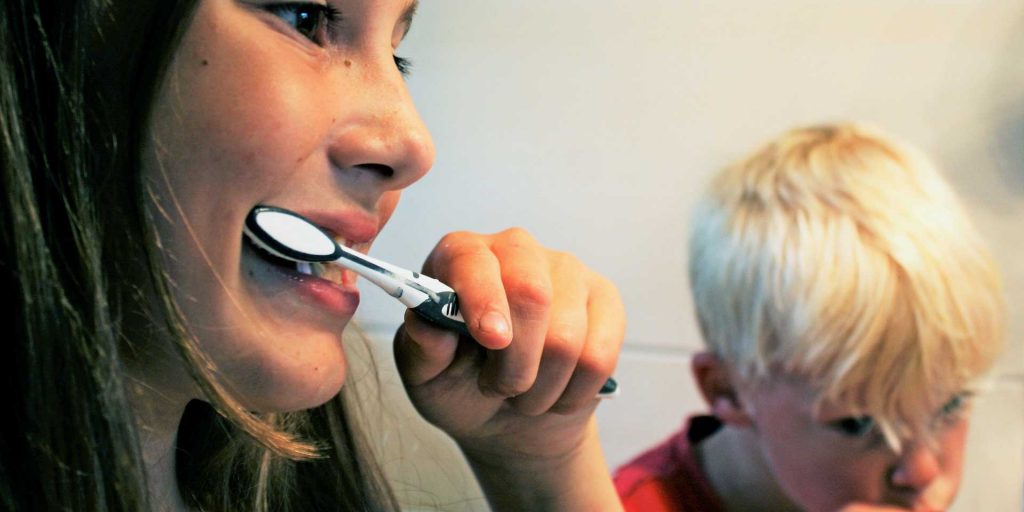Develop a Twice Daily Habit – Brushing
Brush your teeth at least twice a day with a soft-bristled toothbrush to loosen and remove plaque that naturally develops over time. Using soft bristles with proper brushing technique reduces the risk of gum disease and recession. You should use a pea-sized ball of fluoride toothpaste when brushing to strengthen your enamel and to help dislodge food particles and plaque from the tooth surfaces. Also be sure to brush the top surface of your tongue; this will remove any extra plaque-causing food particles, and help keep your breath fresh! Ideally, brush your teeth before going to bed and when you wake up in the morning. This prevents the bacteria in your mouth from partying while you sleep and brushing in the morning cleans up any stragglers.
Pay Attention to The Details
Brushing twice a day will hold most ills at bay but daily flossing is crucial to the long-term health of your teeth and gums. This is because decay-causing bacteria can linger between teeth where toothbrush bristles can’t reach. Clean between your teeth by flossing at least once a day. You can also use a mouthwash to help kill bacteria and freshen your breath. Proper flossing and mouthwash will help remove plaque and food particles from between the teeth and under the gum line.
You Are What You Eat
Tooth decay is the result of bacteria that live in our mouths. When these bacteria digest sugars, they produce acid as a byproduct that weakens the enamel of your teeth and creates cavities. Our diet has a significant influence on the type and number of bacteria living in our mouth. For this reason, it is important that you eat a balanced diet, and try to avoid extra-sugary treats. Nutritious foods such as raw vegetables, plain yogurt, cheese, or fruit can help keep your smile healthy. Additionally, be sure to avoid eating after you brush your teeth at night (this goes for drinking as well, with the exception of water).
Get The Help Of A Professional
While everything above will help you maintain a healthy smile, it is not a substitution for regular dental visits. Our friendly team will help remove the plaque daily flossing and brushing does not and will monitor your dental health to prevent future problems. The ADA recommends a minimum of 2 dental visits a year, one every 6 months. We will work with you and your insurance to ensure that these visits are affordable.
During your visit, you may want to ask about other preventive measures available to you. Dental sealants, for example, are protective plastic coatings that can be applied to the chewing surfaces of the back teeth where decay often starts. If you play sports, be sure to ask your dentist about special mouthguards designed to protect your smile.
Is It Time for Your Next Appointment?
If it’s been six months since your last dental checkup, then it’s time to contact our office and schedule your next appointment!
Brushing and Flossing Instructions
View instructions for properly brushing and flossing your teeth below. You may also wish to download a printable version of these instructions.
Brushing
Brushing: Step 1
Place your toothbrush at a 45-degree angle to your gum.
Brushing: Step 2
Brush gently in a circular motion.
Brushing: Step 3
Brush the outer, inner, and chewing surfaces of each tooth.Brushing: Step 4
Use the tip of your brush for the inner surface of your front teeth.
Flossing
Flossing: Step 1
Wind about 18 inches of floss around your fingers as shown. Most of it should be wrapped around one finger, and the other finger takes it up as the floss is used.
Flossing: Step 2
Use your thumbs and forefingers to guide about one inch of floss between your teeth.
Flossing: Step 3
Holding the floss tightly, gently saw it between your teeth. Then curve the floss into a C-shape against one tooth and gently slide it beneath your gums.Flossing: Step 4
Slide the floss up and down, repeating for each tooth.

